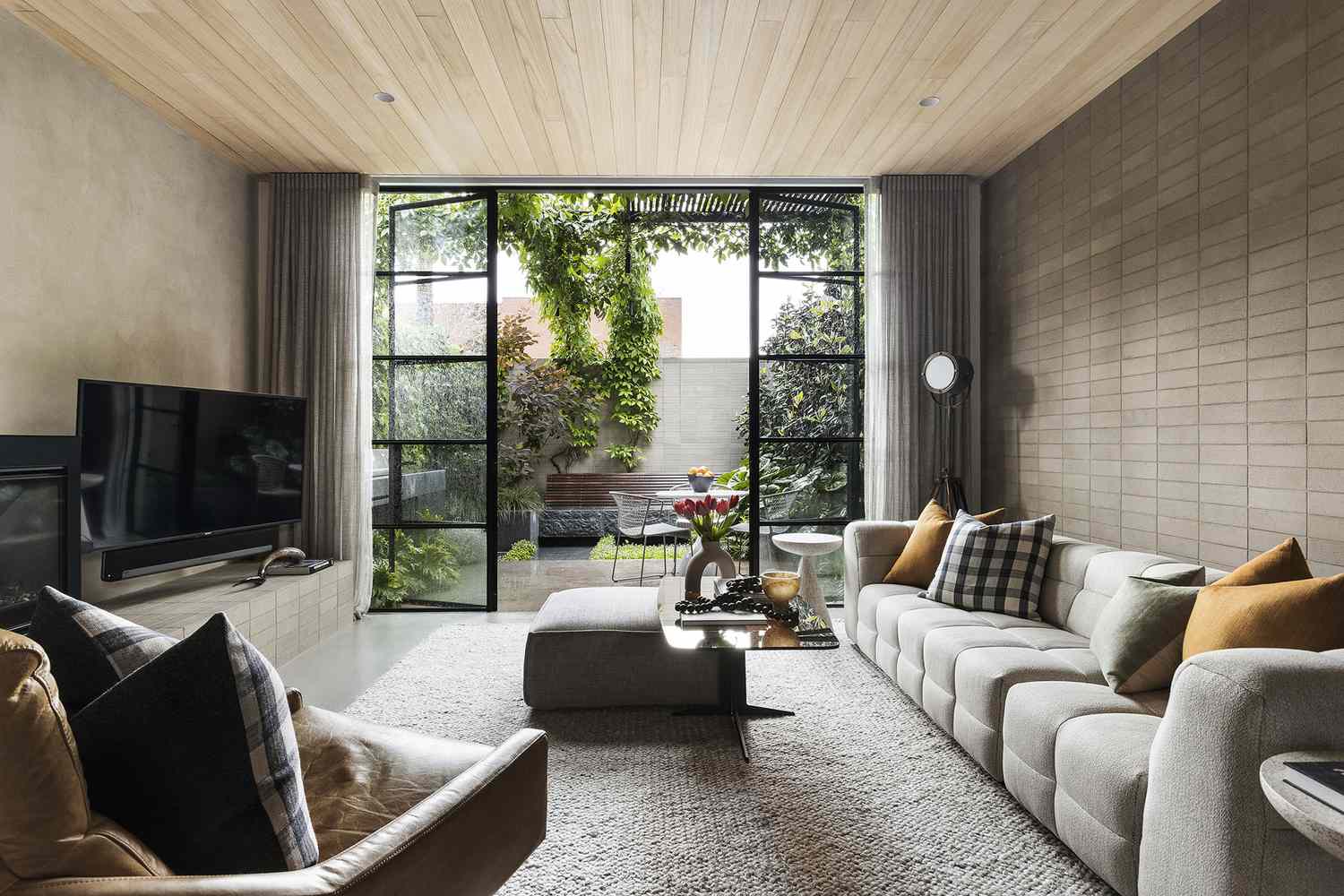There’s been a shift in recent years in sustainability circles about what exactly constitutes green building. Does it mean demolishing old, underperforming structures and building new, energy-efficient buildings with sustainable materials? Or can green building also mean preserving and reusing older buildings—by readapting them for new purposes by retrofitting them to more modern and greener standards?
But as we begin to ask “why” we build instead of “how,” it’s becoming more and more apparent that the latter path means avoiding the greater upfront carbon emissions that a new build might entail, and that’s why preservation can be a form of climate action.
A great example of how preservation goes hand-in-hand with building sustainably can be found in Australia, where there is a growing trend of renovating and retrofitting older workers’ cottages and other 19th-century terrace homes for modern use. In extending a century-old terrace house in an inner suburb of Melbourne, local firm Austin Design Associates managed to create an eye-catching contrast between traditional and modern elements.
As regulations for heritage-status homes like this one go, the character and height of the original front facade have to be maintained. However, there is more leeway at the rear to add a taller addition, as this renovation of the Richmond House has done.
Spacecraft
Once inside, we can see that the designers have completely overhauled the interior to evoke a modern and classy look, with whitewashed walls contrasting against wood, glass, and black metal accents.
Here in the main corridor, we see the original archway has been preserved and highlighted with a semi-circular, metal-framed window above the glass door leading to the main living space. We love how the change between the wood risers to the carpeted steps on the staircase announces a subtle shift from the shared common space downstairs to the more private areas upstairs.
Spacecraft
Off to the side of the corridor, we find the bathroom, which has been modernized to have a floating vanity with two sinks, and a sleek shower stall that has a built-in niche for toiletries and a simple glass wall to define it.
Spacecraft
The bathroom also connects to a walk-in closet with plenty of organized storage space, with lots of wood-lined elements to soften the starker colors of white, black, and grey.
Spacecraft
Moving back into the corridor and into the main living area, we see the open-plan kitchen overlapping with the living room beyond. Here, the kitchen features a clean, rectilinear design scheme, consisting of a wall of white cabinetry and white backsplash tiling with black grouting, all of which is offset against the grey-colored countertop and open wooden shelving. The ceiling is lined with wood, which also contrasts well against the polished concrete floor (not the most eco-friendly material, but certainly durable).
The central kitchen island is the place where the family can gather around for meals. This minimalist piece is warmed up with a top made of natural stone material and a large three-dimensional grid of open shelving that is made with wood. To finish off the look, there are two metal-framed bar-height chairs at one end.
Spacecraft
The living room is warmed up considerably with a palette of warm grey masonry paired with textures of natural brown leather and an off-white, thickly woven carpet. With the full-height glass doors, the interior space is designed to flow out seamlessly with the rear garden space.
Spacecraft
The black metal wood stove is a welcome addition to this space, sitting on a plinth of that same friendly grey.
Spacecraft
Despite its small footprint and hard stone surfaces, the backyard feels incredibly lush, with its walls lined with greenery.
Spacecraft
With the right kind of lighting in the right places, the backyard feels like an illuminated haven in the middle of the city.
Spacecraft
Like so many other examples of outdated housing inventory, older buildings such as this one show that they can indeed be reinvented for modern life—and it is often the choice that is better for the environment and for preserving the historical character of a neighborhood. For the building industry to become more sustainable, preservation and adaptive reuse are critical pieces of the puzzle. To see more, visit Austin Design Associates.
